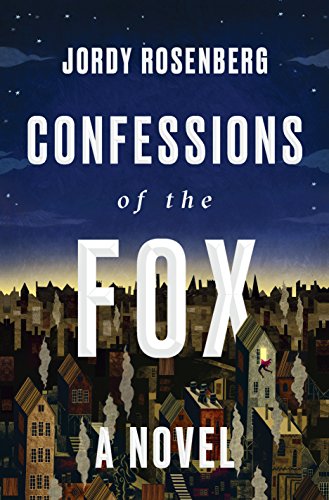Confessions of the Fox
Confessions of the Fox is ostensibly set in 1713-1724, following Jack Sheppard, thief and lover extraordinaire. But, is it? Jack Sheppard is a thief, but only because he must. He is an extraordinary lover, but only to Bess, who sees his true self, his “wonderful, fetching Something.” And before that, Jack was treated as a girl named P— by his mother and his enslaver. Finally realizing he could break his literal shackles, Jack Sheppard emerges.
But is Confessions of the Fox a novel set in the 18th century? Well, yes and no. The footnotes reveal a university professor who has discovered this manuscript and must authenticate it. But that’s not the whole of it, because the university exists in an Atwoodian dystopia, beholden to a pharmaceutical company, and contracts with the military for security. And this professor isn’t any academic, but one who also started life assigned female, but now, notably, takes pharmaceuticals as a transgender man.
This revolutionary novel gives every twist a turn. It is a show of queer force, done with the semaphore and oblique asides that dominated mainstream literature. The titular animal is apt, not because this book is sly, but because it is clever and exceptionally bold.
This novel lays traps for its readers, and once I discovered that, I became more and more enamored. It is a work of research and academic depth, made all the more enjoyable for its juicy conspiracy-and-heist plot layered on top. This is a tale for a vulnerable spirit who could use shoring up, or a tough sort who needs some heart. Or just a person who likes insults that have to do with farting.
As this complex tale spins out its yarn, it is both a rebuke to some and a hopeful reminder to others that just because you don’t know something, doesn’t mean it isn’t there.










